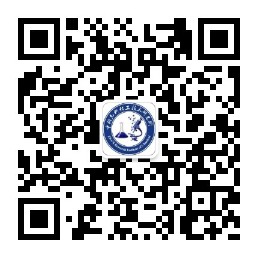歡迎訪問中科光析科學技術研究所官網!
- 聯系我們
- 關注微信

歡迎訪問中科光析科學技術研究所官網!


免費咨詢熱線
400-635-0567|
時間分辨熒光免疫分析儀檢測項目報價???解決方案???檢測周期???樣品要求? |
點 擊 解 答?? |
GB/T 4960的本部分規定了核輻射探測器、通用核儀器、核設施儀表和控制、輻射防護儀器及核輻射應用儀器等核儀器的基本術語和定義。本部分適用于有關核儀器標準、合同、報告和技術規格書等技術文件的編寫,文獻翻譯以及技術交流等。
本標準規定了放射性礦產地質術語分類與代碼。 本標準適用于我國放射性礦產地質信息系統,也適用于放射性礦產地質工作的其他有關領域。
本標準規定了食品理化檢測實驗室質量控制的管理要求、技術要求、過程控制要求和結果的質量保證要求。本標準適用于從事食品質量(包括感官和理化)、化學物質(包括有效成分、農獸藥殘留、食品添加劑、重金屬、毒素、環境污染物等)檢測的食品理化檢測實驗室的質量控制。其他學科領域的化學檢測實驗室亦可參照使用。
本標準給出了與納米技術相關的職業場所的健康和安全指南。本標準側重于納米材料職業制造和應用相關的健康和安全條例。本標準提供的信息可以幫助相關公司、研究人員、勞動者和其他人員在生產、操作、使用和處理納米材料時防止產生對健康和安全不利的后果。這些建議廣泛適用于一系列的納米材料及應用。本標準是基于目前能夠得到的關于納米技術的信息,包括表征、健康效應、暴露評估和控制條例。
本規范適用于新建、擴建和改建的民用建筑和一般工業建筑的電氣工程電磁兼容的設計、施工、檢測及驗收。
YY/T 1304的本部分規定了半自動時間分辨熒光免疫分析儀(以下簡稱分析儀)的術語和定義、要求和試驗方法、標識、標簽和使用說明書、包裝、運輸和貯存。本部分適用于單標記時間分辨熒光免疫分析。本部分不適用于雙標記及多標記時間分辨熒光免疫分析。
YY/T 1304的本部分規定了時間分辨熒光免疫分析定量測定試劑(盒)(以下簡稱試劑盒)的術語和定義、要求和試驗方法、標識、標簽和使用說明書、包裝、運輸和貯存。本部分適用于單標記時間分辨熒光免疫分析。本部分不適用于雙標記及多標記時間分辨熒光免疫分析。
本標準規定了全自動時間分辨熒光免疫分析儀(以下簡稱分析儀)的要求、試驗方法、標志、標簽和使用說明書、包裝、運輸和貯存。本標準適用于全自動時間分辨熒光免疫分析儀。
本標準規定了膠體金免疫層析分析儀的要求、試驗方法、標簽和使用說明、包裝、運輸和貯存。本標準適用于通過測定膠體金試劑卡反應區條帶的反射率對樣品結果進行判讀的儀器(以下簡稱分析儀)。本標準不適用于采用熒光標記或其他標記方法進行快速免疫測定的儀器。
本標準規定了獸藥殘留實驗室質量控制的管理要求、技術要求、過程控制要求、檢測與檢測方法要求和結果的質量保證要求。本標準適用于從事動物性產品中獸藥(包括有毒有害化學品)殘留檢測實驗室的質量控制。獸藥殘留研究實驗室可參照使用。
本標準規定了聚合酶鏈式反應(PCR)方法、二維凝膠電泳(2-DE)法及酶聯免疫吸附(ELISA)法,對生羊奶、超高溫滅菌(UHT)液態羊奶和羊奶粉中摻入牛源性奶成分的定性檢測方法。本標準第一法和第二法適用于生羊奶、UHT滅菌液態羊奶及羊奶粉;第三法適用于生羊奶。本標準第一法的檢出限為:生羊奶中摻假2.0%生牛奶,生羊奶摻假0.2%牛奶粉,UHT液態羊奶摻假5.0%UHT液態牛奶,羊奶粉摻假2.0%牛奶粉;第二法的檢出限為生羊奶摻假5.0%生牛奶,生羊奶摻假1.0%牛奶粉,UHT液態羊奶摻假5.0%UHT液態牛奶,羊奶粉摻假2.0%牛奶粉;第三法的檢出限為生羊奶摻假0.1%生牛奶。
本標準規定了流式細胞術檢測外周血淋巴細胞亞群(T細胞、B細胞、NK細胞、CD4+T細胞和CD8+T細胞)的技術要點,包括標本采集和運輸、免疫熒光染色技術、流式細胞儀檢測和分析、結果報告和審核等方面。
本部分規定了實驗室儀器設備期間核查的通用要求。本部分適用于實驗室儀器設備的期間核查。
本標準界定了進出口食品、化妝品一般術語、制抽樣術語、感官檢驗方法術語、理化檢驗方法術語、生物學檢驗方法術語、毒理學術語、風險分析術語、質量管理體系術語、出入境監督監管術語、標準術語、縮略語。本標準適用于進出口食品、化妝品標準的編寫和出版,也適用于食品工業生產、科研、教學及其他有關領域。
The aim of the standard is to specify a reference method for the determination of thrombocytes in human blood.
This standard gives general instructions for carrying out microbiological examinations in accordance with specific standards. To help to ensure the validity of the examinations. To ascertain the general techniques used for conducting the examinations are the same in all labs. To help to achieve homogeneous results.
This International Standard specifies a method for the determination of at least 16 selected PAH (see Table 1) in drinking water and ground water in mass concentrations above 0,005 ìg/l and in surface water in mass concentrations above 0,01 ìg/l (for each individual compound). This International Standard can be used for samples containing up to 150 mg/l of suspended matter. This method is, with some modification, also suitable for the analysis of waste water. It is possible that this method is applicable to other PAH, provided the method is validated for each case.
This document specifies a measurement method for the determination of particulate benzo[a]pyrene (BaP) inambient air, which can be used in the framework of the Council Directive 96/62/EC [1] and the Directive2004/107/EC [2]. This document specifies performance characteristics and performance criteria for themeasurement method when it is used as a reference method. The performance characteristics of themeasurement method are based on a sampling period of 24 h.This document describes a measurement method which comprises sampling of BaP as part of the PM10particles, sample extraction and analysis by high performance liquid chromatography (HPLC) withfluorescence detector (FLD) or by gas chromatography with mass spectrometric detection (GC/MS). Themethod is applicable for the measurement of BaP in the concentration range from approx. 0,04 ng/m3 toapproximately 20 ng/m3.The lower limit of the applicable range depends on the noise level of the detector and the variability of thelaboratory filter blank.NOTE If the BaP concentration exceeds the calibration range the extract can be diluted.
This part of IEC 61000 is concerned with conducted disturbances in the frequency range from 0 kHz to 9 kHz, with an extension up to 148,5 kHz specifically for mains signalling systems. It gives compatibility levels for public medium voltage a.c. distribution systems having a nominal voltage between 1 kV and 35 kV and a nominal frequency of 50 Hz or 60 Hz (see IEC 60038).\nCompatibility levels are specified for electromagnetic disturbances of the types which can be expected in public medium voltage power supply systems, for guidance in:\na) the limits to be set for disturbance emission into public power supply systems (including the planning levels defined in 3.1.5);\nb) the immunity limits to be set by product committees and others for the equipment exposed to the conducted disturbances present in public power supply systems.\nThe disturbance phenomena considered are:\n· voltage fluctuations and flicker;\n· harmonics up to and including order 50;\n· inter-harmonics up to the 50
This part of IEC 61000 considers tests of immunity and intentional or unintentional emissionsfor electric and/or electronic equipment and tests of screening effectiveness in reverberationchambers. It establishes the required test procedures for performing such tests. Only radiatedphenomena are considered.The objective of this part is to establish a common reference for using reverberationchambers to evaluate the performance of electric and electronic equipment when subjected toradio-frequency electromagnetic fields and for determining the levels of radio-frequencyradiation emitted from electric and electronic equipment.NOTE Test methods are defined in this part for measuring the effect of electromagnetic radiation on equipmentand the electromagnetic emissions from equipment concerned. The simulation and measurement ofelectromagnetic radiation is not adequate for quantitative determination of effects. The defined test methods areorganized with the aim to establish adequate reproducibility and repeatability of test results and qualitative analysisof effects.This part of IEC 61000 does not intend to specify the tests to be applied to a particularapparatus or system. Its main aim is to give a general basic reference to all concernedproduct committees of the IEC. The product committees should select emission limits and testmethods in consultation with CISPR. The product committees remain responsible for theappropriate choice of the immunity tests and the immunity test limits to be applied to theirequipment. Other methods, such as those covered in IEC 61000-4-3, CISPR 16-2-3 andCISPR 16-2-4 may be used.
 前沿科學
微信公眾號
前沿科學
微信公眾號
 中析研究所
抖音
中析研究所
抖音
 中析研究所
微信公眾號
中析研究所
微信公眾號
 中析研究所
快手
中析研究所
快手
 中析研究所
微視頻
中析研究所
微視頻
 中析研究所
小紅書
中析研究所
小紅書